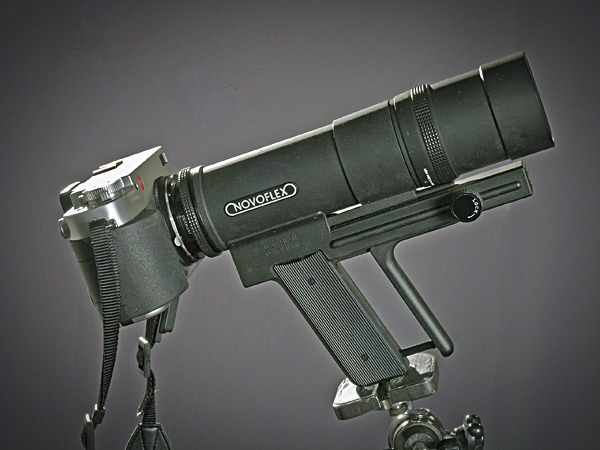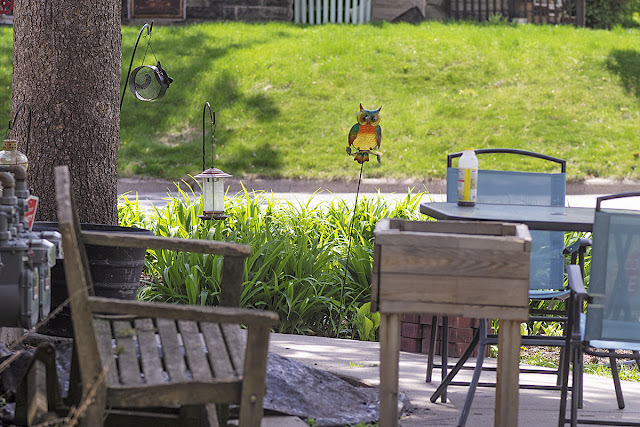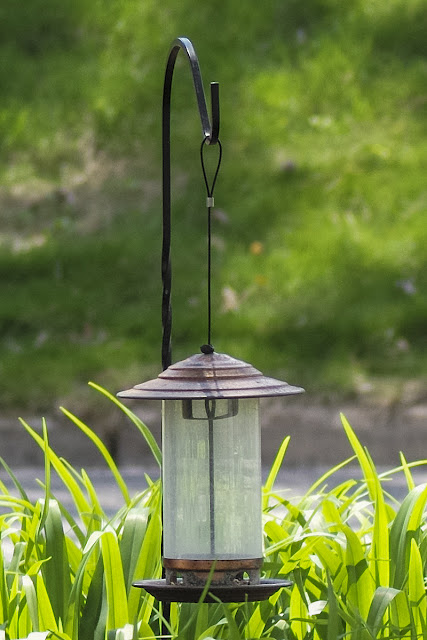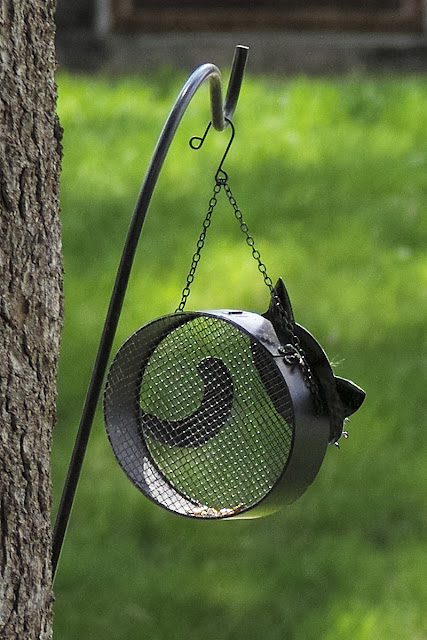Leica M240 with electronic Visflex and 200mm f/3.8 Novoflex
Without question, the best
lenses for a Leica are the Leica lenses.
However, that can put a considerable strain on almost anybody’s photography
budget. Fortunately, there are some
alternatives. I am not talking about cheap
lenses that happen to have a Leica mount or that can be adapted for use on a
Leica. It simply makes no sense to spend
the money on a Leica with all its performance potential and then discard it by
using a sub par lens.
However, there are some
very well performing lenses that do offer a valid alternative. One such lens is the 200mm f/3.8 Novoflex
lens. Unfortunately it is out of
production and would have to be obtained on the used equipment market. That makes it a very cost effective
substitute.
Leica used to make the
400mm and 560mm Telyt. Both gained a
very high recognition for their excellent performance. They were of a simple, 2 lens element
achromatic design which also made them relatively light. Later Leica added the 800mm f/6.3
Telyt-S. It was of a similar design, but
instead of the two cemented lens elements of the 400mm and 560mm lenses, the
800mm was of a cemented three element design.
Novoflex too offered a
400mm and a 600mm lens of the same design as the Leica lenses and they too
proved to be excellent performers. These
were augmented later with the 200mm f/3.8 lens.
Like the 800mm Telyt, this Novoflex lens also consisted of a three element
triplet.

Novoflex 200mm f/3.8 on Leica Digilux 3
The Leica M rangefinder cameras
are best used with lenses up to 135mm.
Everything beyond that used to require the Visoflex housing which
essentially converted the camera to an SLR.
That allowed the use of long lenses with no focusing problems.

Leica M5, Visoflex 3, Bellows 2, 560mm f/6.8 Telyt
But these systems were
relatively bulky and somewhat awkward to use.
To have the brightest possible viewfinder image, focusing in most cases
was best done with the lens wide open.
That, however, eliminated the use of smaller apertures when needed
unless one was willing to accept the darker viewfinder image when using smaller
apertures.
This problem was finally
solved with the introduction of the Leica M 240 and the subsequent follow up models. For these cameras an electronic viewfinder,
the electronic Visoflex is available.
Not only is it a lot
smaller and a lot easier to use, it also adjusts the viewfinder brightness
automatically. With the lens stopped
down, there is hardly any discernible dimming of the viewfinder image.
That has greatly extended
the usable range of these Leica cameras to long lenses but also any closeup
photography.
Since none of the Leica
rangefinder cameras offer autofocus, the ease and speed of focusing is very important. All the longer Leica lenses have conventional
focusing mounts. But with the 400mm and
longer lenses this would have been difficult at best. For that reason the 400mm and 560mm Telyt
lenses used a sliding focusing mount, often referred to as “trombone” focusing, and the 800mm Telyt-S
used a focusing knob.
Novoflex used a different
approach. All of the long lenses
featured a built-in, spring loaded pistol grip which, when squeezed, would
focus the lens to infinity while releasing it would focus the lens to its
closed focusing point.
That proved to be very
successful and until autofocus became available, the Novoflex lenses were considered
by many as the fastest focusing long lenses.
Leica M240, Novoflex 200mm f/3.8, ISO 3200, 1/45 sec, f/3.8, handheld
I have both the 200mm and
400mm Novoflex lenses. Since I don’t do
a lot of long lens work, the Novoflex lenses were a less expensive alternative
without having to sacrifice performance.
In addition, I found the Novoflox Follow Focus system so easy to use
that especially the 200mm can easily be used handheld without any major draw
backs. Before 'graduating' to the Leica M240, I used both Novoflex lenses quite successfully on a Leica Digilux 3.
Leica M240, Novoflex 200mm f/3.8, ISO 800, 1/350 sec, f/8, handheld
Slightly cropped
Cropped detail of the same file
Cropped detail of the same file
Leica M240, Novoflex 200mm f/3.8, ISO 800, 1/1000 sec, f/8
Cropped detail of the same file
Leica M240, Novoflex 200mm f/3.8, ISO 1600, 1/2000 sec f/8, handheld
Cropped detail of the same file
Leica M240, Novoflex 200mm f/3.8, ISO 1600, 1/1000 sec, f/8, handheld
Cropped detail of the same file
Leica M240, Novoflex 200mm f/3.8, ISO 800, 1/500 sec, f/8, handheld
Cropped detail of the same file
To paraphrase Johannes
Mario Simmel, “Es muss nicht immer Leica sein” (it doesn’t always need to be
Leica)
More sample shots:
Leica Digilux 3, Novoflex 200mm f/3.8, ISO 400, 1/800 sec, f/8, handheld
Leica Digilux 3, Novoflex 200mm f/3.8, ISO200, 1/500 sec, f/8, handheld
Leica Digilux 3, Novoflex 200mm f/3.8, ISO 200, 1/320 sec, f/8, tripod
Leica Digilux 3, Novoflex 200mm f/3.8, ISO 800, 1/640 sec, f/3.8, tripod
For other articles on this blog please click on Blog Archive in the column to the right
_____________________________________________________________________
_____________________________________________________________________
 Buy vintage Leica cameras from
America's premier Leica specialist
Buy vintage Leica cameras from
America's premier Leica specialist
http://www.tamarkinauctions.com/ http://www.tamarkin.com/leicagallery/upcoming-show

Buy vintage Leica cameras from
America's premier Leica specialist
http://www.tamarkinauctions.com/ http://www.tamarkin.com/leicagallery/upcoming-show
Click on image to enlarge
Order: info@gmpphoto.com
Please make payment via PayPal to GMP Photography
Click on image to enlarge
Order: info@gmpphoto.com
Click on image to enlarge
Order: info@gmpphoto.com
Click on image to enlarge
Order: info@gmpphoto.com
Please make payment via PayPal to GMP Photography
Click on image to enlarge
Order: info@gmpphoto.com
Please make payment via PayPal to GMP Photography
Click on image to enlarge
Order: info@gmpphoto.com
Please make payment via PayPal to GMP Photography






























When using the a 200 mm lens on a Digilux 3, is't that a full frame equivalent of a 400 mm lens?
ReplyDeleteThat is correct. But you are still using a 200mm lens. It remains just as easy to handhold as on a full frame camera.
DeleteIn the 14th picture from the top, the horizontal wires appear to be somewhat out of focus. Why?
ReplyDeleteThey were substantially closer than the tower and out of the range of the depth of field.
DeleteIt is amazing that the cropped example is able to show the thin wires.
DeleteI am surprised to see the rather good performance of the Digilux 3 with its rather small sensor.
ReplyDeleteThe Digilux 3 was actually a very nice camera, but overall it obviously can't compete with a full frame camera. Depending on the work the camera is supposed to do, it is a lot more important to have the lenses necessary to do the work properly without the need for any great amount of cropping. Therein lies a d huge advantage of a high resolution, full frame camera. The cropped examples taken with the M240 clearly show that.
DeleteThe cropped examples of the 5th shot from the top are amazing. You can't tell that they are only a small portion of the total image.
ReplyDeleteCouldn't you use the screen in back of the camera instead of the electronic finder?
ReplyDeleteYou could, but the focusing with the Visoflex is substantially more accurate since you are looking at a magnified image.
DeleteThe picture with the runners appears to be soft. Is there a fall off with the lens when used wide open?
ReplyDeleteI have never noticed any less performance with the lens wide open. The reason for the slight softness is due to the fact that I had to use a 1/45 sec handheld with a moving main subject. The rule of thumb here is a minimum shutter speed of 1/200 sec to successfully handhold the camera.
DeleteWhy didn't you use a tripod fro all of the shots?
ReplyDeleteI find lugging around a tripod very cumbersome. For that reason I shoot handheld whenever possible. Subsequently most of the sample photographs are a good representation of what one can expect under real world shooting conditions.
Delete